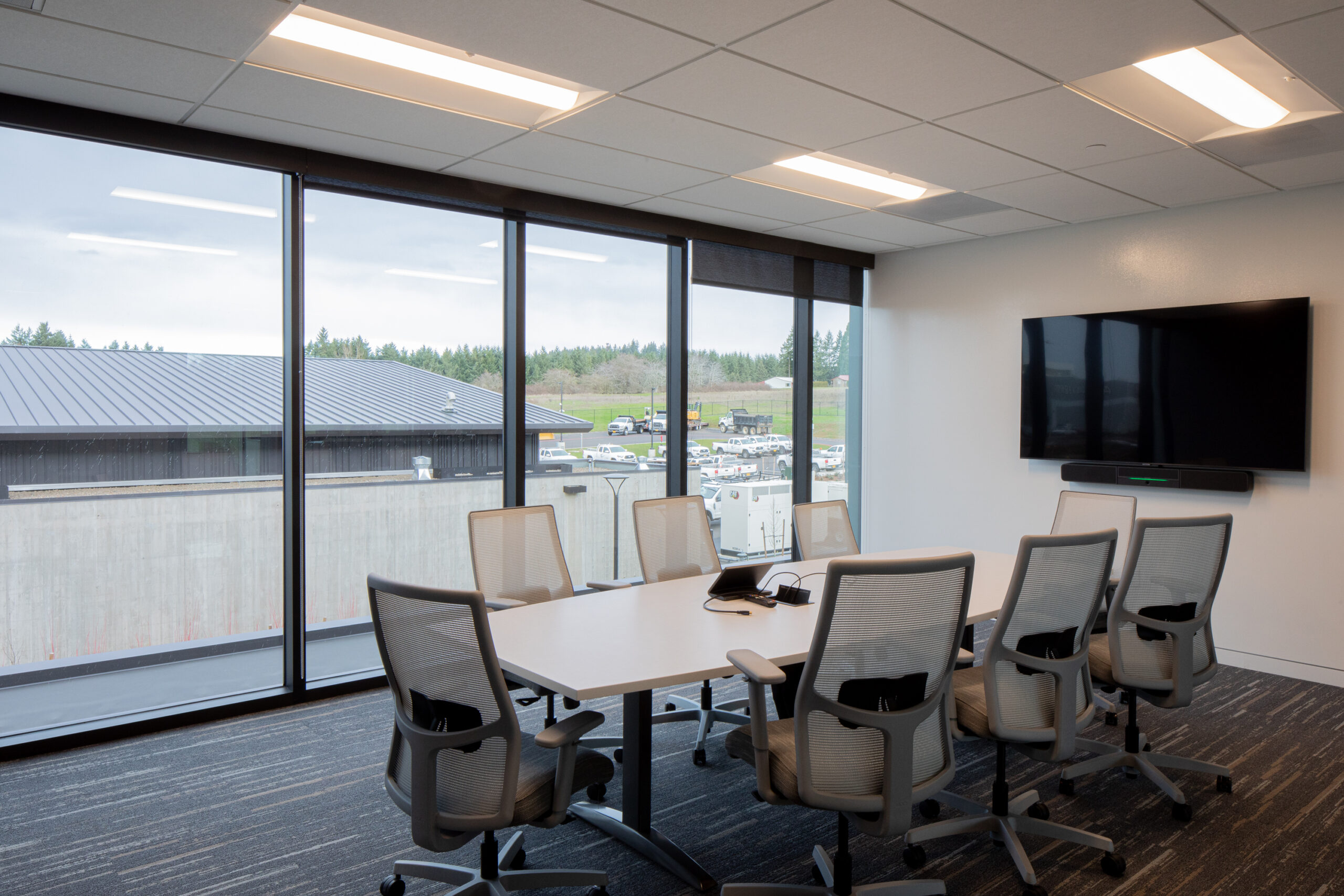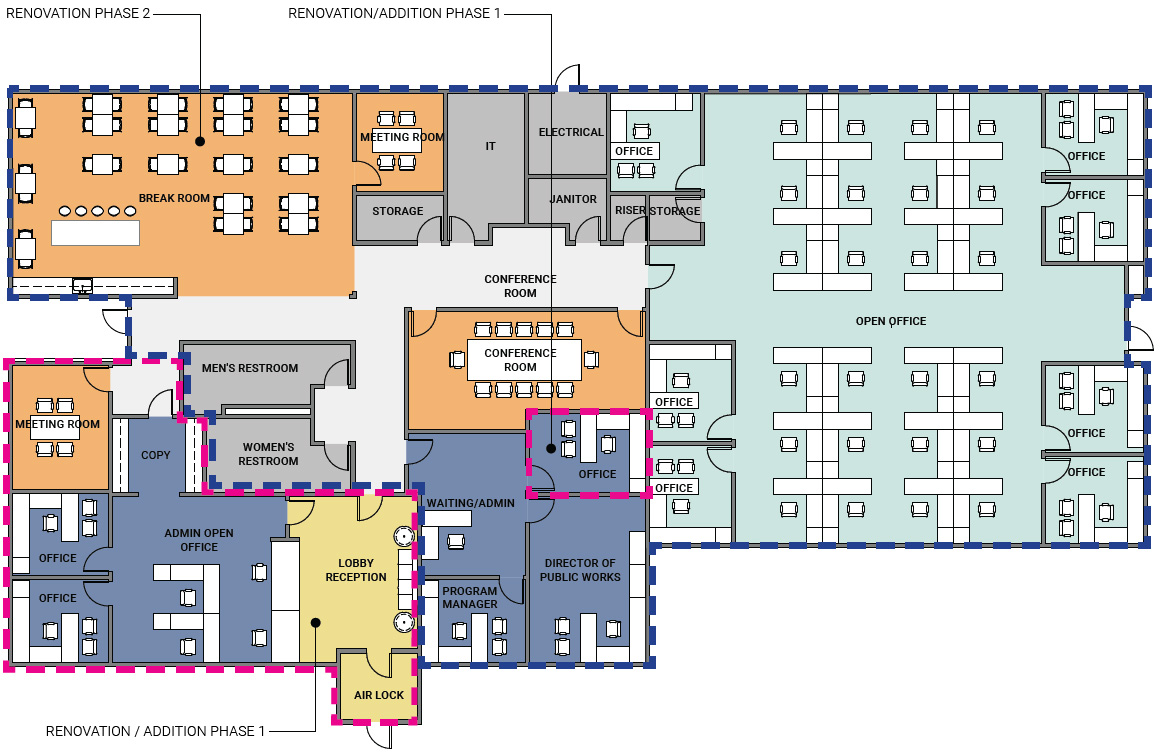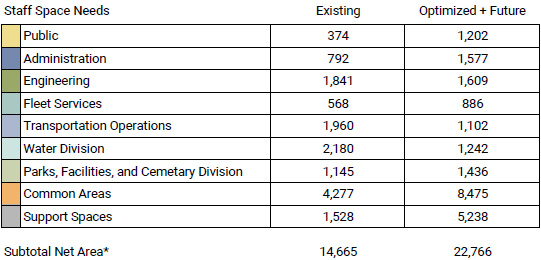
When tasked with reworking a public works facility, the key to success lies in architectural expertise and meaningful collaboration with the people who will use the space every day. A recent public works facility study demonstrates how early stakeholder engagement leads to smarter, more cost-effective design solutions that will serve both current and future needs.
Understanding Users Through Inclusive Design
Rather than making assumptions about facility requirements, our team begins with comprehensive stakeholder engagement sessions. We meet with each department and user group, focusing on their specific operational needs and challenges. This inclusive approach reveals opportunities that might be missed in a more traditional design process.

From Insight to Innovation
This collaborative discovery process yields two key benefits. First, by bringing together diverse stakeholder groups, we identify opportunities for shared spaces and operational efficiencies that aren’t apparent otherwise. Second, these discussions help prioritize which improvements will deliver the most immediate impact for users while laying the groundwork for future expansion.
“When starting a multi-phase master plan, we try to make sure the Phase One renovation addresses those most immediate needs,” explains John Pete, Project Manager. “With each group we meet, we ask about their most pressing challenges. While they might have ten different needs, we work together to identify their top priority.” Working within the limitations of renovations and additions means a more creative problem-solving approach—we may have to make compromises in the final design because of the existing building’s design, funding cycles, operational flow, or other constraints.
Smart Phasing: Building for Today and Tomorrow
Developing a strategic phasing plan is one of the most tangible outcomes of our stakeholder engagement process. This approach offers several advantages:
Immediate needs are addressed first, assuring clients that the most critical improvements happen early
Taxpayer resources are used efficiently and practically, beginning in the initial phases
Early phase decisions are made with future expansion in mind, preventing costly rework
The facility can grow as needs evolve

Measurable Results Through Collaboration
The result is a facility master plan that’s more efficient and responsive to user needs. By engaging stakeholders early and often, we’ve created a roadmap for a public works facility that will serve its community well into the future while being mindful of taxpayer resources.
